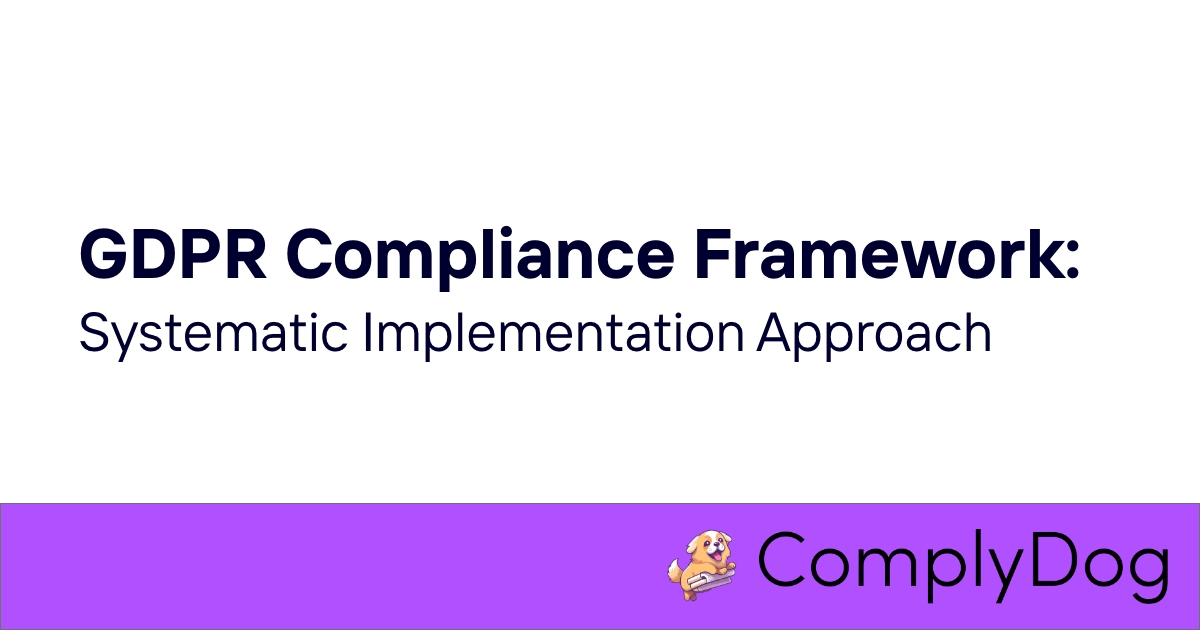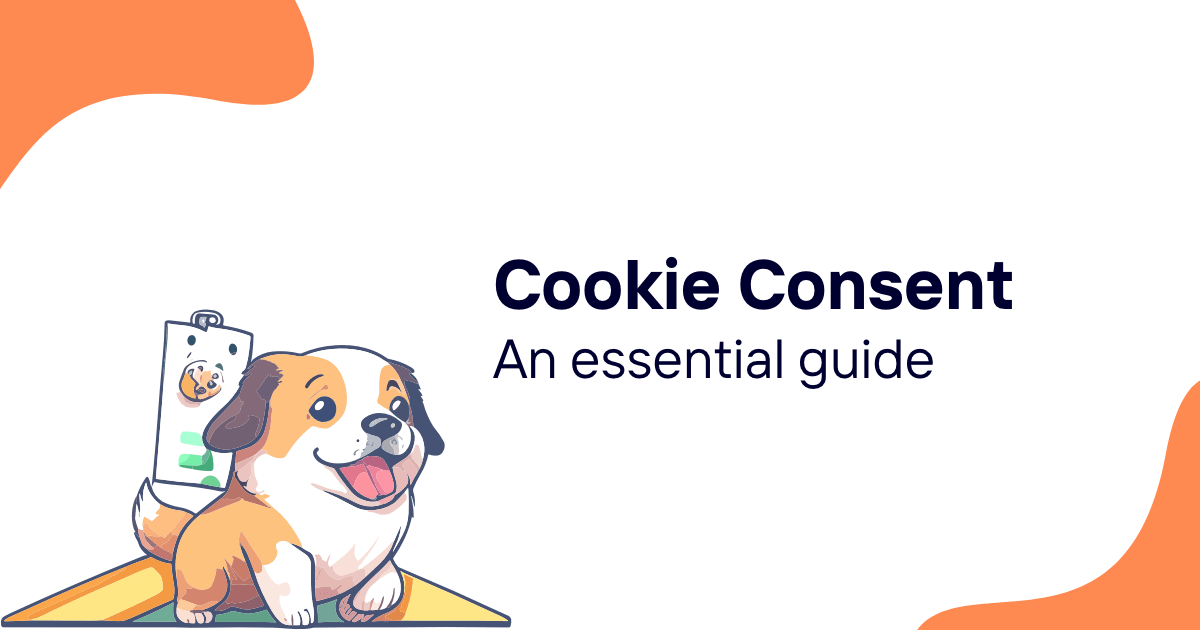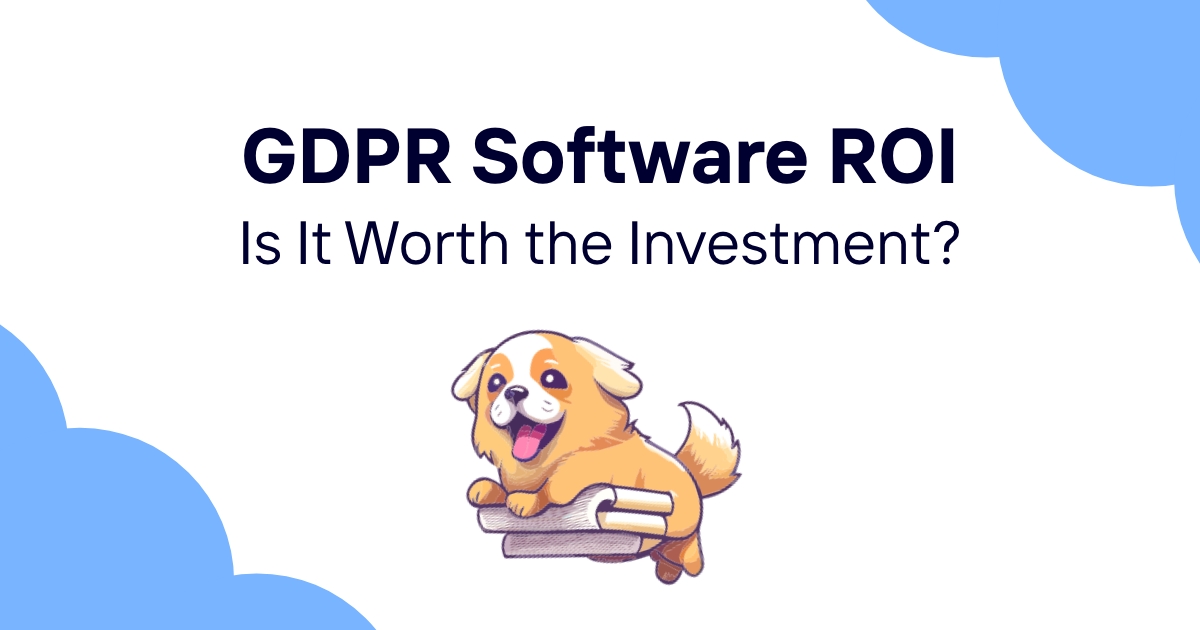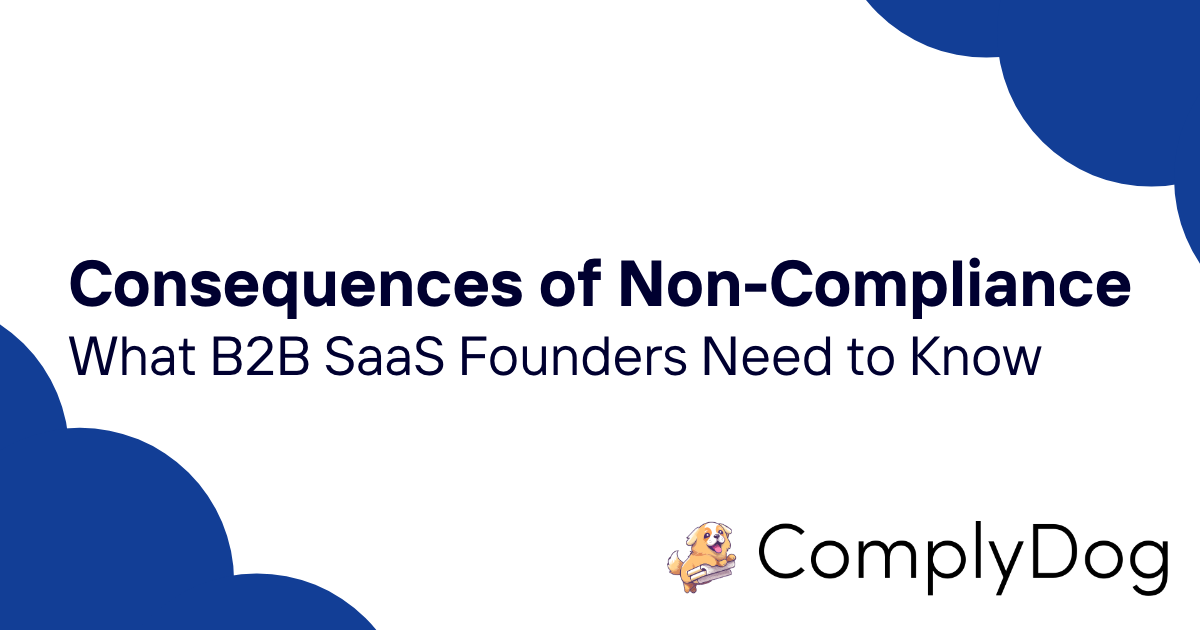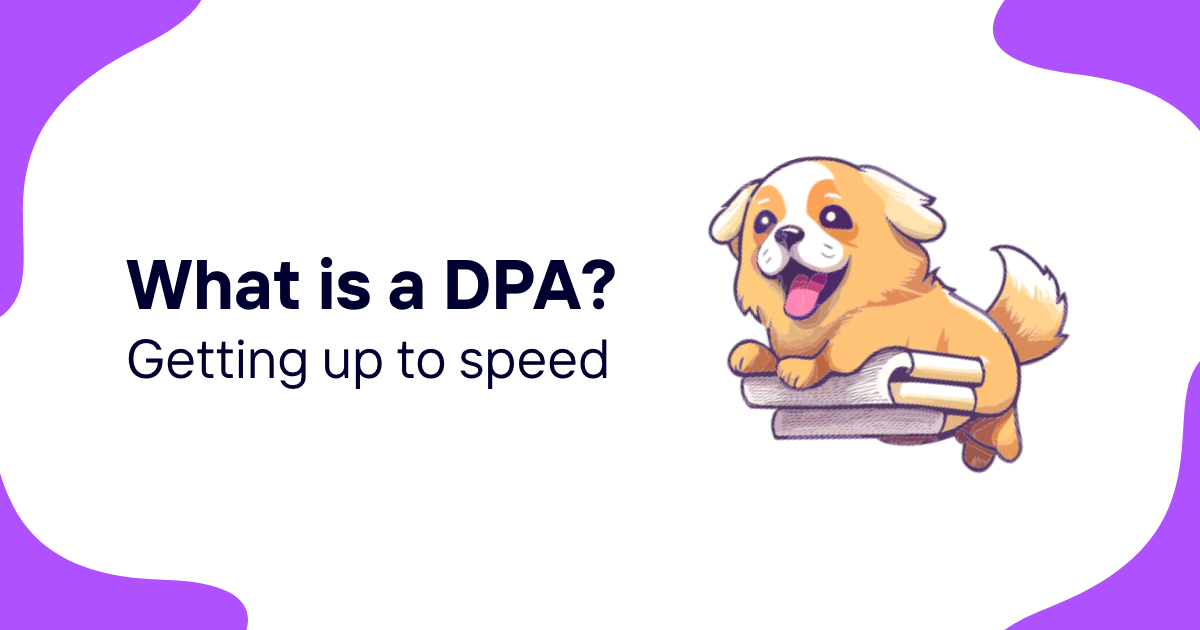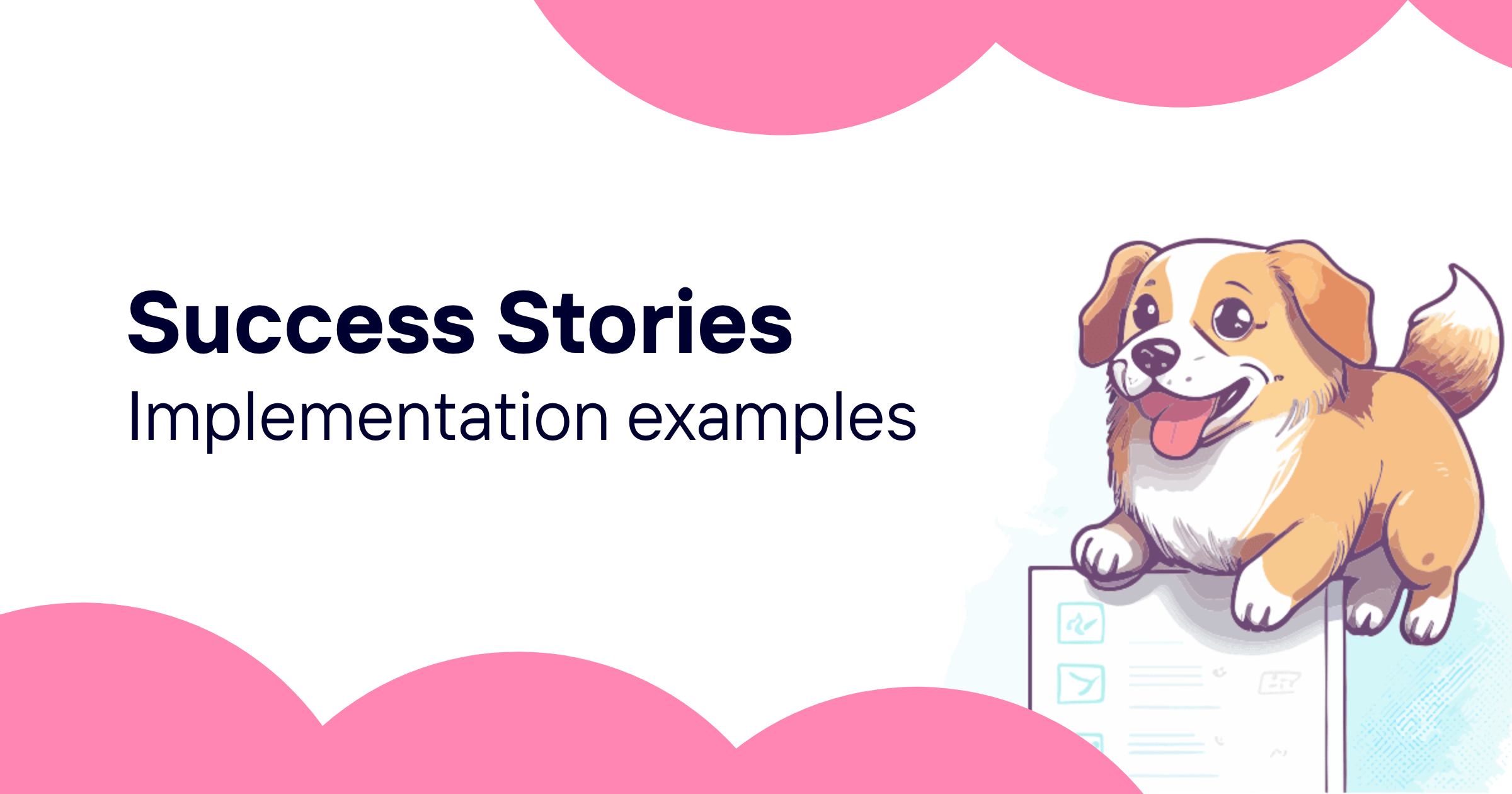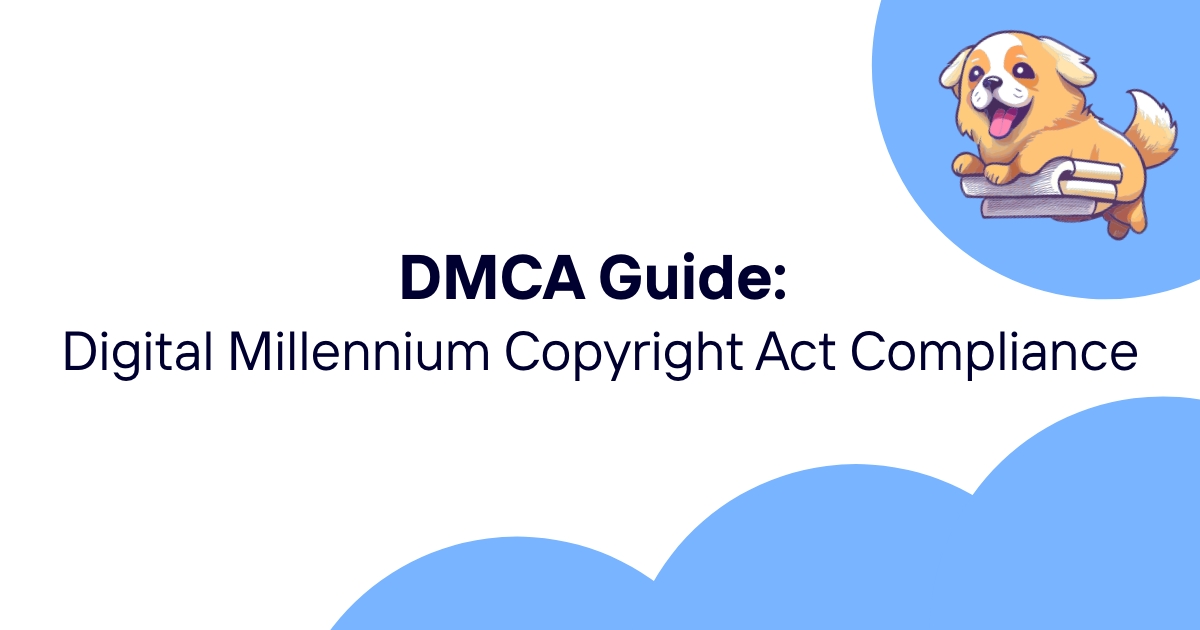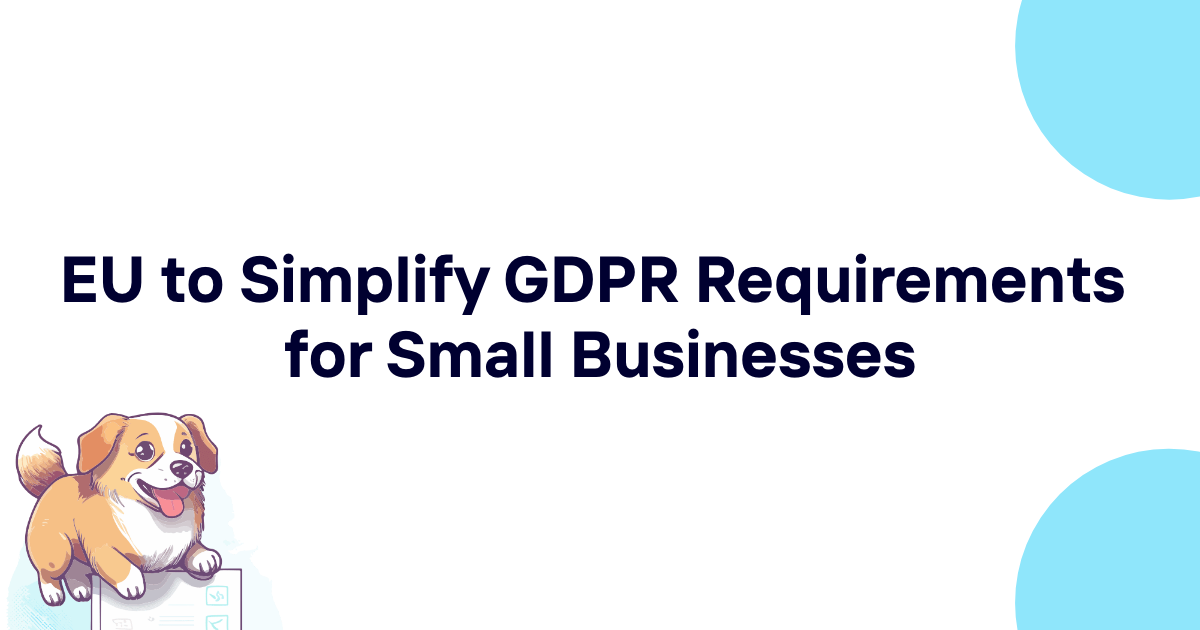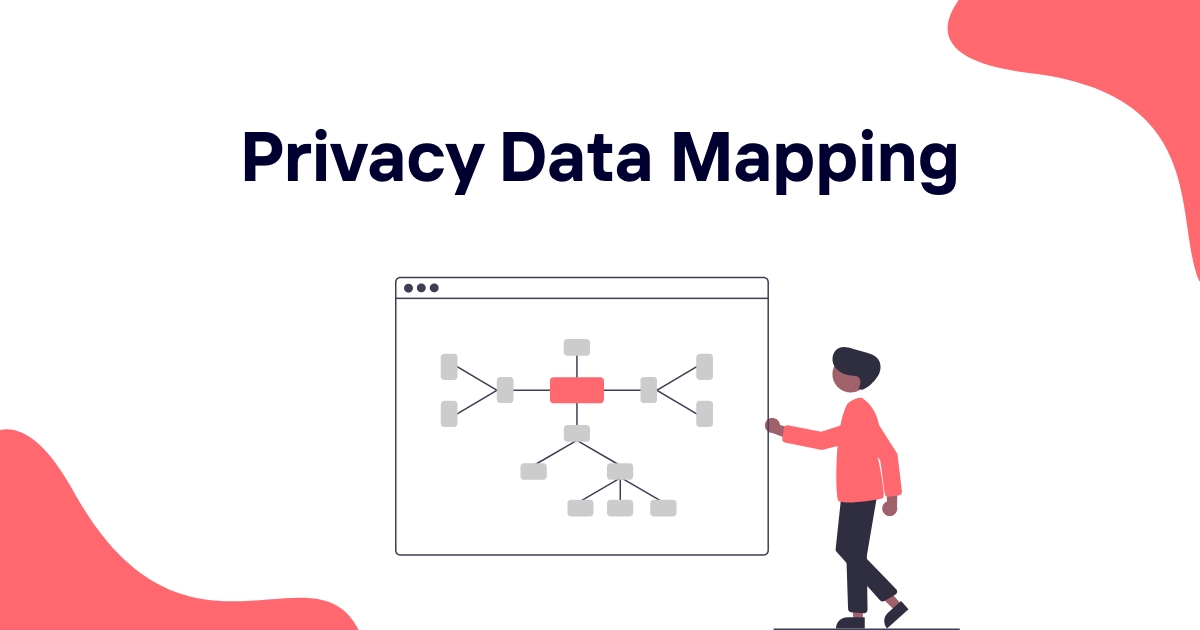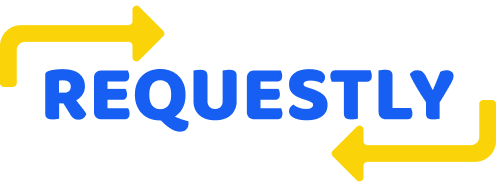GDPR compliance requires systematic frameworks that organize complex requirements into manageable implementation components while ensuring comprehensive coverage and sustainable maintenance. Ad-hoc approaches often create gaps while structured frameworks enable consistent progress and measurable outcomes.
Most organizations struggle with GDPR complexity because they lack systematic methodologies that break compliance into logical layers with clear dependencies and implementation sequences. Effective frameworks provide roadmaps that guide implementation while adapting to organizational constraints and business requirements.
This guide presents a comprehensive GDPR compliance framework that enables systematic implementation through structured layers while providing flexibility for organizational customization and continuous improvement.
GDPR Compliance Framework Overview
Framework Philosophy and Principles
Systematic approach organizes GDPR requirements into logical implementation layers that build upon each other while enabling parallel development across different organizational functions.
Risk-based prioritization focuses implementation efforts on areas with highest privacy impact while optimizing resource allocation and ensuring maximum protection from available investments.
Business integration ensures privacy requirements support rather than hinder business objectives while creating competitive advantages through privacy leadership and customer trust.
Continuous improvement enables framework evolution as business requirements change while maintaining comprehensive protection and adapting to regulatory developments.
Framework Architecture Design
Layered structure provides clear separation between governance, technical implementation, operational procedures, and performance measurement while ensuring integration across all components.
Component interdependencies define relationships between different framework elements while ensuring implementation sequences respect prerequisites and avoid gaps in protection coverage.
Scalability considerations enable framework adaptation for different organizational sizes while maintaining comprehensive protection regardless of business complexity or resource availability.
Customization flexibility allows framework modification for industry-specific requirements while maintaining core compliance principles and regulatory adherence.
Implementation Methodology
Phased deployment spreads implementation complexity over manageable timeframes while enabling learning and adjustment throughout the development process.
Milestone-based progress tracking provides clear indicators of implementation success while enabling course correction and resource reallocation as needed.
Quality assurance procedures verify framework implementation effectiveness while ensuring comprehensive compliance rather than superficial policy development.
Stakeholder engagement ensures framework implementation includes input from all affected business functions while building support and understanding for privacy initiatives.
Framework Benefits
Structured implementation reduces compliance complexity while providing clear guidance for organizations lacking internal privacy expertise or implementation experience.
Comprehensive coverage ensures all GDPR requirements are addressed systematically while preventing gaps that could create regulatory exposure or compliance failures.
Resource optimization enables efficient use of available budget and personnel while achieving maximum privacy protection and business value from compliance investments.
Consider how systematic frameworks incorporate proven best practices and expert recommendations for implementation excellence.
Framework Components and Structure
Core Framework Elements
Governance layer establishes privacy leadership, accountability structures, and strategic direction while ensuring executive support and resource allocation for compliance success.
Technical layer implements technology solutions including privacy tools, security controls, and system integration while providing automation and operational efficiency.
Process layer defines operational procedures for privacy management including individual rights handling, incident response, and vendor management activities.
Measurement layer provides performance monitoring, compliance verification, and continuous improvement capabilities while demonstrating privacy program effectiveness and business value.
Component Integration Design
Horizontal integration connects framework components across organizational functions while ensuring consistent privacy protection throughout business operations.
Vertical integration aligns framework layers from strategic governance through operational implementation while ensuring coherent privacy program development and management.
Cross-functional coordination ensures framework implementation addresses business needs while maintaining regulatory compliance and operational efficiency across diverse organizational activities.
External integration addresses vendor relationships and third-party processing while extending framework protection throughout complex business ecosystems and partnerships.
Framework Documentation Structure
Policy hierarchy establishes comprehensive privacy policy framework while providing clear guidance for implementation across different organizational levels and business functions.
Procedure library documents operational privacy processes while providing practical guidance for staff implementation and ensuring consistent privacy practices.
Standard templates enable efficient privacy documentation while ensuring quality and consistency across privacy assessments, agreements, and communication materials.
Reference materials provide comprehensive guidance for privacy implementation while supporting staff education and decision-making throughout daily business operations.
Quality Assurance Framework
Validation procedures verify framework implementation correctness while ensuring privacy controls work effectively and provide intended protection across business operations.
Compliance verification confirms regulatory requirement satisfaction while providing evidence for potential audit and regulatory interaction requirements.
Performance assessment evaluates framework effectiveness while identifying optimization opportunities and ensuring continuous improvement in privacy protection and business value.
Gap analysis identifies framework deficiencies while providing specific recommendations for enhancement and ensuring comprehensive privacy program development.
Governance and Management Layer
Executive Leadership Structure
Privacy governance committee includes senior leadership representation while ensuring privacy considerations are integrated into strategic business decision-making processes.
Chief Privacy Officer role provides dedicated privacy leadership while ensuring adequate authority and resources for comprehensive privacy program implementation and management.
Board oversight ensures privacy program accountability while providing strategic guidance and ensuring privacy considerations are included in organizational risk management.
Executive reporting provides regular privacy program updates while highlighting achievements, challenges, and resource requirements for continued privacy program success.
Policy and Strategy Development
Comprehensive privacy policy framework addresses all organizational data processing while providing clear guidance for implementation across business functions and activities.
Strategic privacy planning aligns privacy capabilities with business objectives while identifying opportunities for competitive advantage through privacy leadership and innovation.
Risk management integration includes privacy considerations in organizational risk assessment while ensuring comprehensive protection across all business activities and stakeholder relationships.
Regulatory compliance strategy addresses current and anticipated privacy regulations while ensuring proactive compliance and adaptation to evolving regulatory requirements.
Accountability and Responsibility
Clear role definition assigns specific privacy responsibilities throughout the organization while ensuring comprehensive coverage and avoiding gaps in privacy protection.
Accountability mechanisms provide oversight and performance measurement while ensuring privacy responsibilities are fulfilled effectively across all organizational levels.
Escalation procedures address privacy issues requiring senior management attention while ensuring rapid response and appropriate resource allocation for compliance challenges.
Decision-making authority establishes clear lines of responsibility while enabling efficient privacy decision-making and ensuring appropriate expertise influences privacy choices.
Resource Management
Budget allocation provides adequate resources for privacy program implementation while balancing cost control with effectiveness requirements and business value creation.
Personnel planning ensures appropriate privacy expertise while building internal capabilities and reducing dependency on external consultants and service providers.
Technology investment prioritization focuses on privacy solutions providing maximum protection and operational efficiency while supporting business growth and competitive positioning.
Training and development programs build organizational privacy capabilities while ensuring staff competency and creating career development opportunities in privacy fields.
Technical Implementation Layer
Privacy Technology Architecture
Platform selection prioritizes privacy solutions providing comprehensive capabilities while ensuring integration with existing technology infrastructure and business applications.
System integration ensures privacy tools work effectively together while avoiding duplication and ensuring efficient resource utilization across technology investments.
Scalability planning addresses growing privacy technology requirements while ensuring solutions can accommodate business growth and evolving regulatory demands.
Security architecture protects privacy technology infrastructure while ensuring appropriate access controls and preventing unauthorized access to privacy management systems.
Data Protection Implementation
Encryption deployment protects personal data in storage and transmission while ensuring appropriate key management and maintaining system performance and operational efficiency.
Access control systems limit personal data access to authorized personnel while providing granular permissions and comprehensive audit trails for compliance verification.
Data discovery and classification tools identify personal data across organizational systems while providing automated protection and ensuring comprehensive data inventory maintenance.
Anonymization and pseudonymization capabilities enable data use while protecting individual privacy through technical measures that reduce identification risks.
Automation and Integration
Automated consent management enables efficient consent collection and enforcement while ensuring real-time compliance across all customer touchpoints and business channels.
Individual rights automation processes access, correction, and deletion requests efficiently while ensuring regulatory compliance and comprehensive response capabilities.
Privacy monitoring systems provide real-time visibility into privacy program performance while enabling proactive risk management and continuous improvement opportunities.
Integration platforms connect privacy tools with business applications while ensuring seamless data flow and maintaining privacy protection throughout business operations.
Performance and Optimization
System performance monitoring ensures privacy technology doesn't negatively impact business operations while maintaining user experience and operational efficiency.
Capacity planning addresses growing privacy technology requirements while ensuring adequate resources for current and future privacy protection needs.
Technology refresh planning maintains current privacy capabilities while incorporating new technologies that enhance protection and operational efficiency.
Cost optimization identifies opportunities for efficiency improvement while maintaining comprehensive privacy protection and ensuring effective resource utilization.
Process and Procedure Layer
Data Lifecycle Management
Data collection procedures ensure appropriate legal basis and data minimization while maintaining business functionality and supporting legitimate organizational objectives.
Processing controls implement purpose limitation and data minimization while ensuring business operations can achieve legitimate objectives efficiently and effectively.
Retention management implements appropriate data storage periods while ensuring automatic deletion when retention purposes are satisfied or legal requirements expire.
Disposal procedures ensure secure data destruction while maintaining business continuity and ensuring appropriate evidence preservation for legal and business requirements.
Individual Rights Management
Request processing procedures handle access, correction, deletion, and other individual rights efficiently while ensuring regulatory compliance and positive customer experience.
Identity verification protects against fraudulent requests while ensuring legitimate rights holders can exercise their privacy rights without unnecessary barriers or complexity.
Response generation provides comprehensive and accurate information while meeting regulatory timeframes and ensuring appropriate communication with data subjects.
Quality assurance ensures rights responses are complete and correct while maintaining consistent service quality and regulatory compliance across all request types.
Incident Response Procedures
Detection systems identify potential privacy incidents while ensuring rapid response and appropriate escalation based on incident severity and regulatory requirements.
Investigation procedures determine incident scope and impact while ensuring appropriate evidence preservation and regulatory compliance throughout incident response.
Notification processes address regulatory and individual notification requirements while ensuring timely and accurate communication with all required parties.
Remediation activities address incident causes while implementing improvements to prevent similar incidents and demonstrating commitment to privacy protection.
Vendor Management Processes
Due diligence procedures evaluate vendor privacy capabilities while ensuring appropriate protection throughout third-party relationships and service arrangements.
Contract management ensures comprehensive data processing agreements while addressing ongoing vendor oversight and performance management requirements.
Monitoring systems track vendor privacy compliance while identifying issues requiring attention and ensuring continued protection throughout vendor relationships.
Performance management addresses vendor privacy failures while ensuring rapid remediation and maintaining appropriate protection standards throughout service relationships.
Monitoring and Measurement Layer
Performance Metrics Framework
Compliance indicators track regulatory adherence while providing evidence of privacy program effectiveness and identifying areas requiring attention or improvement.
Risk metrics measure privacy exposure reduction while demonstrating privacy program value and supporting resource allocation decisions for continued investment.
Operational efficiency indicators track privacy process performance while identifying optimization opportunities and ensuring efficient resource utilization.
Business value metrics demonstrate privacy program contribution to organizational objectives while supporting continued investment and stakeholder support for privacy initiatives.
Monitoring Systems Implementation
Real-time dashboards provide immediate visibility into privacy program status while enabling proactive management and rapid response to emerging issues.
Automated alerting triggers notifications when privacy metrics fall below acceptable levels while ensuring immediate attention to compliance issues and performance problems.
Trend analysis identifies patterns requiring attention while supporting predictive management and enabling proactive response to emerging privacy challenges.
Reporting capabilities generate regular privacy program summaries while providing stakeholder communication and supporting regulatory reporting requirements.
Audit and Verification
Internal audit procedures verify privacy program implementation while identifying gaps and ensuring comprehensive compliance across all organizational activities.
External assessment opportunities provide independent verification while benchmarking privacy program maturity against industry standards and best practices.
Compliance verification confirms regulatory requirement satisfaction while providing evidence for potential regulatory interaction and demonstrating accountability.
Documentation review ensures privacy records are complete and accurate while supporting audit activities and providing evidence of privacy program effectiveness.
Continuous Improvement Process
Regular assessment cycles evaluate privacy program performance while identifying enhancement opportunities and ensuring continued advancement toward privacy excellence.
Stakeholder feedback collection gathers input from customers, employees, and partners while incorporating external perspectives into privacy program development.
Best practice research identifies industry developments while enabling adoption of innovative approaches that enhance privacy protection and business value.
Performance optimization initiatives address identified improvement opportunities while enhancing privacy program effectiveness and ensuring maximum value from available resources.
Continuous Improvement Cycle
Assessment and Analysis
Regular privacy program evaluation identifies strengths and weaknesses while providing comprehensive understanding of current capabilities and improvement opportunities.
Gap analysis compares current state with desired privacy program maturity while identifying specific areas requiring enhancement and resource allocation.
Benchmark comparison evaluates privacy program performance against industry standards while identifying competitive positioning and advancement opportunities.
Root cause analysis examines privacy program challenges while identifying systemic issues requiring comprehensive solution rather than superficial fixes.
Planning and Prioritization
Improvement planning creates systematic approaches for privacy program enhancement while ensuring appropriate resource allocation and realistic timelines.
Priority ranking addresses improvement opportunities based on impact and feasibility while ensuring maximum value from available improvement resources.
Resource allocation provides adequate support for improvement initiatives while balancing enhancement activities with ongoing privacy program maintenance requirements.
Timeline development provides realistic schedules for improvement implementation while ensuring continued privacy program operation and regulatory compliance.
Implementation and Monitoring
Enhancement implementation follows systematic approaches while ensuring improvement initiatives don't disrupt ongoing privacy program operation or regulatory compliance.
Progress tracking monitors improvement initiative effectiveness while enabling course correction and ensuring successful enhancement completion.
Quality assurance verifies improvement implementation while ensuring enhancements actually improve privacy program effectiveness rather than creating additional complexity.
Integration testing ensures privacy program enhancements work correctly with existing systems while maintaining operational efficiency and user experience.
Evaluation and Optimization
Results assessment evaluates improvement initiative effectiveness while measuring actual privacy program enhancement and business value creation.
Lessons learned documentation captures insights from improvement initiatives while informing future enhancement efforts and building organizational learning capabilities.
Knowledge sharing distributes improvement insights throughout the organization while building collective privacy expertise and supporting continued advancement.
Strategy refinement updates privacy program direction based on improvement results while ensuring continued alignment with business objectives and regulatory requirements.
Framework Customization Guidelines
Organizational Adaptation
Size-based customization addresses different organizational scales while maintaining comprehensive protection regardless of business complexity or resource availability.
Industry-specific modifications incorporate sector requirements while ensuring compliance with industry regulations and addressing unique privacy challenges.
Maturity-based implementation enables framework adaptation for organizations at different privacy program development stages while providing clear advancement pathways.
Resource-based scaling adjusts framework complexity for available resources while ensuring comprehensive protection within organizational constraints and capabilities.
Regulatory Adaptation
Multi-jurisdictional compliance addresses different privacy regulations while ensuring comprehensive protection across global operations and regulatory environments.
Regulatory change management enables framework adaptation for evolving privacy requirements while maintaining current compliance and preparing for future developments.
Enforcement consideration addresses different regulatory approaches while ensuring appropriate framework emphasis and resource allocation for compliance priorities.
Industry guidance integration incorporates sector-specific regulatory guidance while ensuring framework addresses unique compliance requirements and enforcement expectations.
Technology Integration
System compatibility ensures framework works with existing technology infrastructure while providing clear guidance for technology enhancement and integration requirements.
Cloud adaptation addresses privacy protection in cloud environments while ensuring framework applicability across different deployment models and service arrangements.
Emerging technology consideration enables framework evolution for new privacy challenges while ensuring continued effectiveness as technology environments change.
Legacy system integration addresses privacy protection for older technology while providing transition planning for technology modernization and enhancement initiatives.
Business Alignment
Strategic integration ensures framework supports business objectives while creating competitive advantages through privacy leadership and customer trust development.
Operational efficiency optimization reduces compliance overhead while maintaining comprehensive protection and ensuring framework supports rather than hinders business operations.
Customer experience consideration ensures framework implementation enhances rather than compromises customer relationships while building trust and competitive positioning.
Partnership integration addresses privacy protection throughout business ecosystems while ensuring framework extends to vendor relationships and collaborative arrangements.
GDPR compliance frameworks provide systematic approaches that transform privacy implementation from overwhelming complexity to manageable, structured development. Organizations that adopt comprehensive frameworks typically achieve better compliance outcomes while building sustainable privacy capabilities that support long-term business success.
Effective framework implementation requires commitment to systematic approaches and continuous improvement while building organizational capabilities that create competitive advantages through privacy excellence and customer trust.
Ready to implement a comprehensive GDPR compliance framework with systematic methodology and structured development? Use ComplyDog and access framework templates, implementation guidance, and systematic development tools that support comprehensive privacy program development and sustainable compliance excellence.
